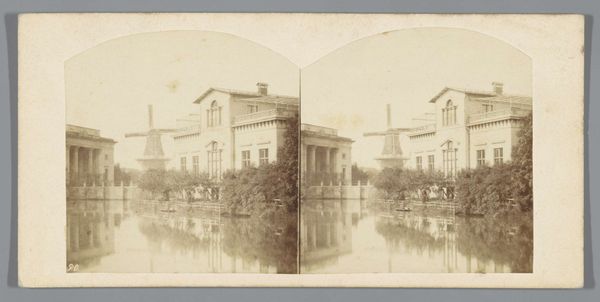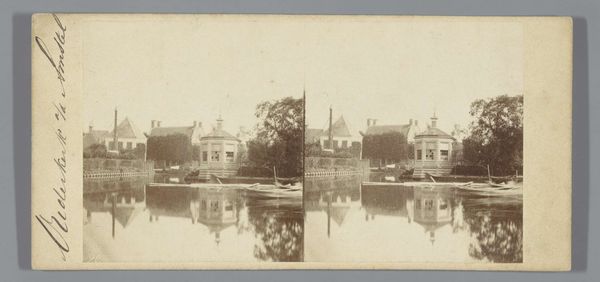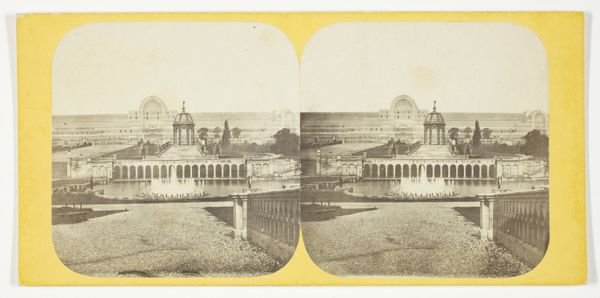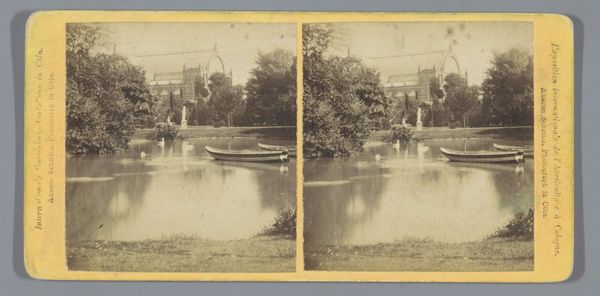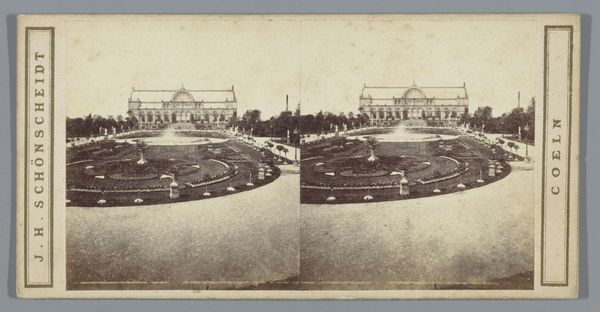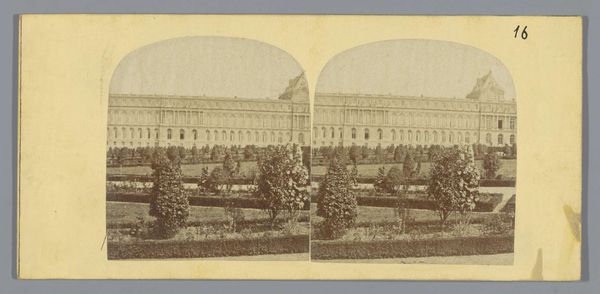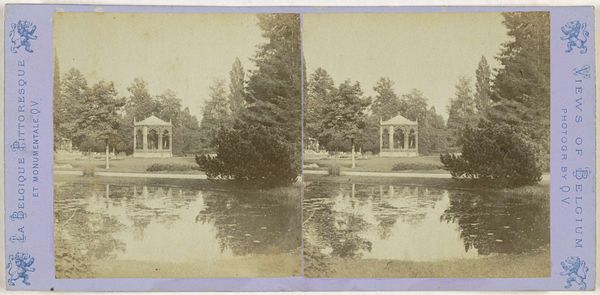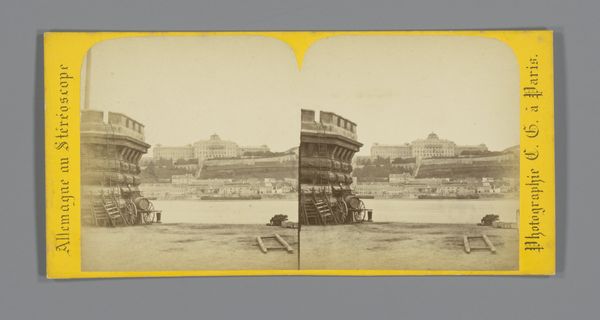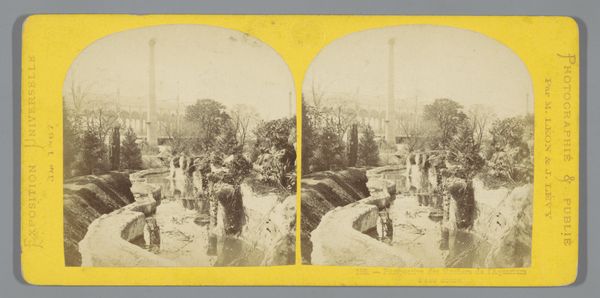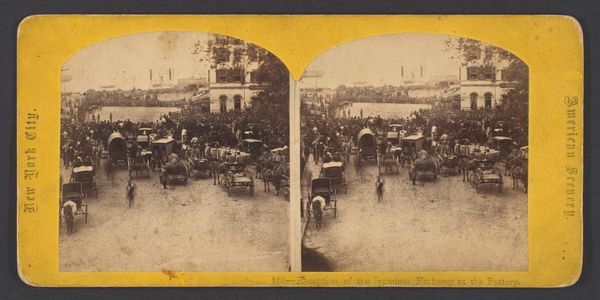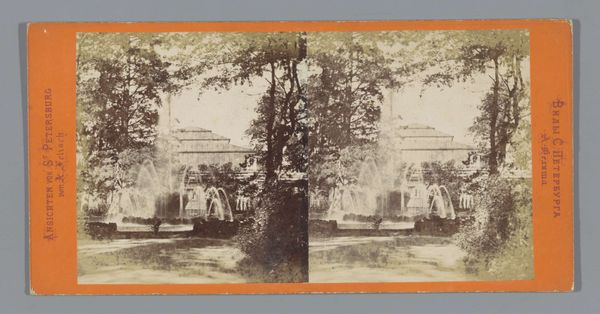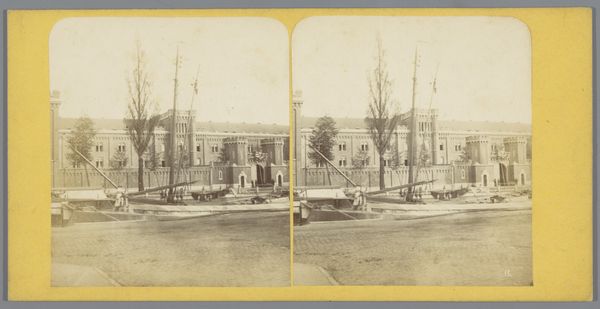
Dimensions: height 82 mm, width 168 mm
Copyright: Rijks Museum: Open Domain
This photograph shows the Klein Trianon in de tuinen van Versailles, built during the reign of Louis XV. The eye is immediately drawn to the colonnade, which speaks to a lineage stretching back to classical antiquity. Consider how the colonnade, a series of columns supporting a structure, was first conceived in ancient Greece and Rome. These architectural forms were not merely structural; they were imbued with notions of balance, order, and civic virtue. As we move forward in time, this same colonnade finds its way into Renaissance palaces, Baroque churches, and now, here, gracing a French garden pavilion. Yet, each time the colonnade reappears, its meaning subtly shifts. What was once a symbol of democratic ideals in Greece becomes an emblem of imperial power in Rome, and later, an assertion of aristocratic taste in France. Through its continued use, the colonnade takes on a layered complexity, embodying the weight of historical memory and subconscious associations. It serves as a reminder that the past is never truly gone; it resurfaces, reshaped, in the present.
Comments
No comments
Be the first to comment and join the conversation on the ultimate creative platform.
